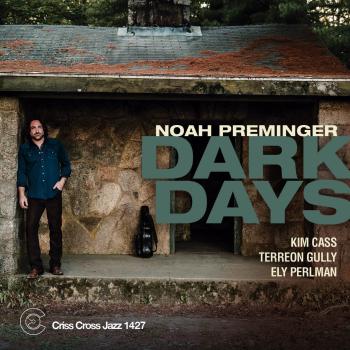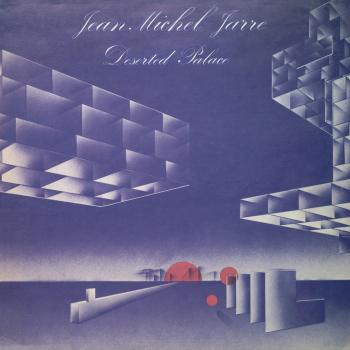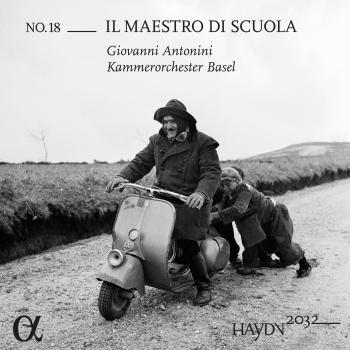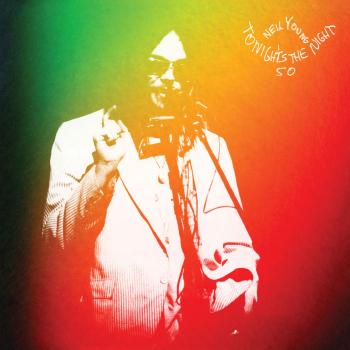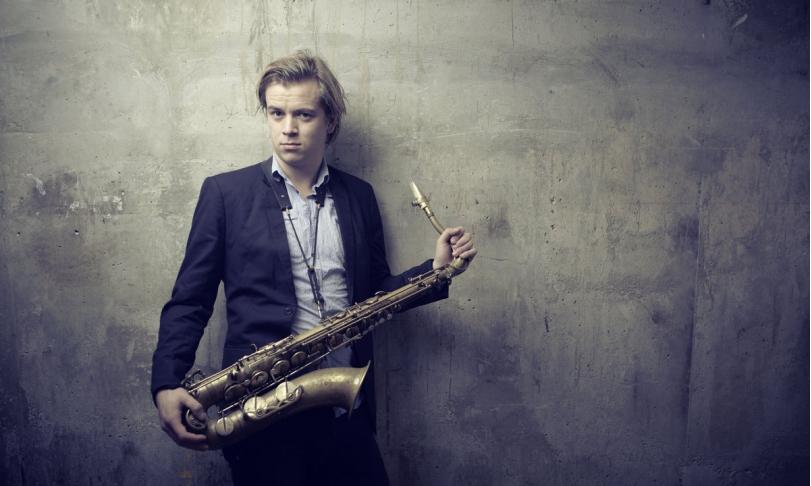
Not a few jazz fans have the hairs made stand up in the back of the neck, when they read that a jazz quartet, here the quartet of the Norwegian Marius Neset, becomes "amplified" by a chamber orchestra of classical provenance, mainly staffed with strings, here the London Sinfonietta, conducted by Geoffrey Paterson. Reminders of string sugared productions, having the strings dubbed in and making raise pink clouds between the loudspeakers draw immediately past the mental eye. Nothing new but quite intolerable. Why should this be different on the album Snowmelt? For example, because Marius Neset looks skeptically from the album cover behind a hair strand hanging wildly into his face, as if he wanted to say: With me everything is different? At least the production does not seem to have mixed the orchestral sound into the recording of the quartet, if one can trust the message of the studio photo on which the Marius Neset jazz quartet - Marius Neset / tenor and soprano saxophone, Ivo Neame / piano, Petter Eldh / bass, Anton Eger / drums - but without instruments (!) are assembled in between the members of the chamber orchestra. Or perhaps because this is already the second production of the label ACT, in which Marius Neset is accompanied by an orchestra, taking into account that owners of a label tend to pay attention to profit, at least to cover costs? However, in the case of Lion, it was a so-called jazz orchestra, more specifically the Trondheim Jazz Orchestra and not an ensemble dominated by strings. Finally, everything could be different, at least less bad than feared, because Marius Neset on Snowmelt, like on Lion, has exclusively assembled own compositions. By the way, the well-informed jazz fan is quite familiar with the fact that Marius Neset is not only a genius saxophonist, but also a no less ingenious composer and arranger. In order to clarify the role played by orchestral sound on Snowmelt, it only helps to start the download and to listen.
The master of Snowmelt personally opens the spectacle with the Prologue, which, as a loudly overblown primal scream, rises solo in the high register of the soprano saxophone, and fades away in softly scuffed, quiet scales. There follow seven more or less short stories under the common heading Arches of Nature, beginning with Sirens, a sirens song swirling in the style of the classical French composers Roussel and Debussy, with the participation of the jazz quartet and restrainedly used strings. Acrobatics offers reminiscences of Gershwin’s, Bernstein’s and Stravinsky's world of sound colors together with a central, acrobatically buoyant appearance of the quartet, resonating super-acceleratedly in the full orchestra with strings, woodwinds and brass, finally finding an unsuspected end in a breathless hunt. Circles follows to Acrobatics without a break with a lonely trumpet call in the style of Stravinsky's The story of the Soldier, which looks like to be briefly recounted, if there would not immediately be adopted as a contrast program, concerted by the chamber orchestra alone, interweaved by horns and finally by tenor saxophone, the Wunderhorn world of Gustav Mahler. In Caves, the quartet and the chamber orchestra chase through a travesty of the Wunderhorn world, to finally relax peacefully in Paradise and to give themselves to the contemplation, which belongs to the paradise well. Rainbows first proves to be a colorful trip into the world of the luxurious Big Band Sound, to enjoy during the evening relaxation, by the open fire, sitting in a chair, enjoying a whiskey, just past the Kitsch, which thanks to a drastic change of mood after a short wellness trip laudably becomes vanished into thin air. Utterly contemplative the final of the Arches of Nature, the Pyramids is passing by, which can not completely deny the lingering sound of the fifties.
After the polymorph prologue, there is an extended breather with The Storm is over, before the album finally is dying away with the twelve-minute-long title song Snowmelt following the prelude Introduction to Snowmelt with soft orchestral, soft, under the calm singing of the tenor saxophone, supported by tze relaxed murmuring orchestra, again a little bit too strong on string sound: This not the strongest song on the album, but dramatically seen conclusive with a view to the thematized snow melt after the previous partly turbulent events.
The album Snowmelt is a successful crossover of jazz and classical music, which would also make a very good figure on the classical concert stage, a figure that differs by the unbridled impetus of contemporary jazz as well as the by a series of clever ideas from the current compositions of the so-called classical modernism, and that provides some entertainment not necessarily inherent to the classical academic competition. One has to concede to the creators of Snowmelt, without fuss or quibble, that there can be no question of the above referred prejudice of a jazz performance coated by the pink colour appearance of a string dominated chamber orchstra. Rather, such prejudice melts away faster than the snow melting in the first spring. Strongly recommended!
Marius Neset, tenor and soprano saxophone
Ivo Neame, piano
Petter Eldh, bass
Anton Eger, drums
London Sinfonietta
Geoffrey Paterson, conductor



